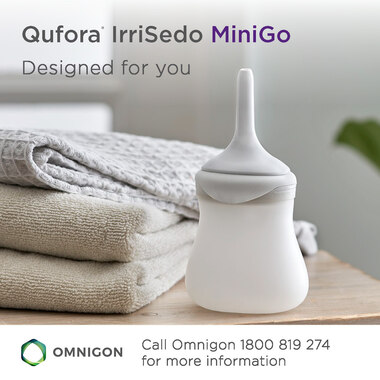Volume 28 Number 1
A multidisciplinary approach is needed to improve mental health and social connectedness in women suffering with obstetric fistula, chronic 4th degree tear and severe pelvic organ prolapse in limited resource regions
Hannah Krause
For referencing Krause H. A multidisciplinary approach is needed to improve mental health and social connectedness in women suffering with obstetric fistula, chronic 4th degree tear and severe pelvic organ prolapse in limited resource regions. Australian and New Zealand Continence Journal 2021; 27(4):93-96
DOI https://doi.org/10.33235/anzcj.27.4.93-96
Abstract
Women with obstetric fistula, chronic 4th degree perineal tear and severe pelvic organ prolapse in limited resource regions where effective healthcare is unavailable experience high rates of mental health dysfunction and loss of social connectedness. A multidisciplinary team approach encompassing medical, nursing, social work and allied health professionals is required to provide non-surgical and surgical repair options for pelvic floor pathologies, mental health support and social assistance. In addition, healthcare and promotion organisations are needed to assist with education, programs and funding to enable effective provision of management strategies.
Keywords pelvic organ prolapse, urinary incontinence, obstetric injury, limited resource regions, mental health and wellbeing
Introduction
Pelvic floor dysfunction in parous women is common globally. Women suffering with obstetric fistula (OF), chronic (unrepaired) 4th degree tear and severe symptomatic pelvic organ prolapse (POP) require support for emotional, social and mental health impacts, and effective non-surgical or surgical repair options. Their overall health outcomes are modified according to the availability of resources.
While OF and chronic 4th degree perineal tears are infrequently seen in countries well-resourced for healthcare, POP occurs commonly, irrespective of available resources. However, where healthcare provision is well resourced, these pelvic floor pathologies all attract swift and effective treatment options; where healthcare resources are limited, women suffer indefinitely with these conditions1. They experience loss of social status and support networks1 and mental health dysfunction becomes more common in combination with limited availability of any mental health support programs2. This commentary aims to detail the impact of limited healthcare provision for pelvic floor dysfunction and identifies key areas where resources may be prioritised.
Types of pelvic floor dysfunction
Obstetric fistula
Obstetric fistula is the occurrence of a pelvic floor fistula due to a prolonged obstructed labour3. While fistula surgery can be very challenging due to significant tissue loss related to the aetiology of OF, there are numerous publications over many years relating surgical repair techniques and closure rates to guide practice.
Post-repaired fistula residual incontinence3 is a common problem following successful OF closure4, with limited guidelines on diagnostic and management options available5. The causes of post-repaired fistula residual incontinence include urodynamic stress incontinence, detrusor overactivity and voiding dysfunction6. Options of management include conservative treatment with pelvic floor rehabilitation such as bladder retraining, pelvic floor exercises and improved voiding techniques, the use of clean intermittent self-catheterisation for severe voiding difficulty, medication for detrusor overactivity, and surgical options for urinary stress incontinence. However, the lack of availability of pelvic floor physiotherapists and continence nurses or medications for detrusor overactivity in limited resource regions reduces treatment options for these women. There is less robust data published on outcomes of non-surgical management options.
Urodynamics testing in women with post-repaired fistula residual incontinence is an important tool for diagnosis6. Where such equipment is unavailable, modified urodynamics7 is a useful option which enables adequate assessment of post-repaired fistula residual incontinence to assist with further management planning, both non-surgical and surgical.
Over the last few decades, a number of surgical options for managing post-repaired fistula stress incontinence have been developed; however, these have not all demonstrated high levels of successful outcomes8–11. Many of the surgical techniques require a high level of surgical skill in order to maximise safety and success and minimise complications10. Other surgical techniques performed concurrently with fistula repair may risk closure integrity if voiding dysfunction results.
Periurethral bulking for the treatment of stress urinary incontinence is an established minimally invasive surgical option; however, products are typically expensive, thus limiting accessibility where funding is restricted. In a small study7, polyacrylamide hydrogel bulking agent (Bulkamid®) was used in women with post-repaired fistula stress incontinence, with good effect and without complications. Larger studies are required to identify if periurethral bulking can expand available treatment options for women with this aetiology of stress urinary incontinence.
Chronic 4th degree tear
Acute obstetric 4th degree perineal tears in well-resourced locations are repaired in a timely fashion with established guidelines. Surgeons are subject to frequent audits and requirements to attend training workshops. However, worldwide there are many women living with unrepaired 4th degree perineal tears due to lack of access to obstetric care or timely surgical intervention.
A technique of delayed primary repair of chronic 4th degree perineal tear under spinal anaesthesia, without faecal diversion and without surgical flaps, is reported by Goh and colleagues12 and a subsequent follow-up13 of cohorts by the same researchers provides evidence of few surgical complications and promising functional results. The majority of these women had delivered in their villages, with no access to professional healthcare workers for pregnancy care or delivery, and no subsequent diagnosis of their injuries or guidance for management.
When vaginal childbirth is complicated by a 4th degree perineal tear, without repair, healing occurs by fusion of the mucocutaneous junctions and the anal sphincter remains disrupted. As a result of persistent faecal incontinence, patients tend to suffer from significant physical, social, as well as mental health impacts1,2. In cases of chronic 4th degree tears, effective surgical techniques must be utilised and women must have access to such care.
Severe POP
Stage 3 and 4 POP14 can be very debilitating, resulting in significant symptoms of discomfort and limitations in activities of daily living. In countries well-resourced for healthcare, non-surgical and surgical management options are available. However, where health resources are limited, access to even established forms of treatment remains unattainable.
Surgical repair of POP is sparsely available in limited-resource regions, and is often dependent on access to gynaecologists trained in effective techniques and funding. Non-surgical options with the use of support pessaries have not been introduced in many parts of the world due to the unavailability of pessaries and healthcare professionals being unfamiliar with their use.
Goh and colleagues15 introduced pessaries as a management option for POP in western Uganda. Pessaries were confirmed to be very effective in relieving symptoms of POP and were retained in the majority of patients with no complications. The women requiring pessaries were easily taught self-management and healthcare professionals were educated in pessary management. Patients and staff alike were very receptive to this non-surgical option of management for POP.
Impacts
Social stigma
For women with gynaecological pathologies, healthcare provision is usually focussed on medical and surgical options aimed at restoring anatomy and function. However, attention and care must also be directed to assist women suffering social sequelae and mental ill-health occurring as a consequence of their pelvic floor injury or dysfunction.
There is significant social stigma and loss of social connectedness faced by women with OF, unrepaired 4th degree tear and severe POP in western Uganda1. Many of those women suffered abandonment by their families which they attributed to their gynaecological condition and therefore experienced significant social stresses; 42% of women suffering with OF reported that their partner had rejected them due to their injury1. Frequently, women had unsuccessfully sought treatment or had been unable to afford treatment options that were available. Prevention of these injuries with access to safe and effective obstetric care, and access to gynaecological services, would help to avoid and alleviate these significant social stresses causing isolation and loss of family cohesion.
Mental health
There is a significant risk of mental health dysfunction associated with OF, chronic 4th degree perineal tear and severe POP2. In 2005, Goh and colleagues16 first used the General Health Questionnaire‑28 (GHQ‑28) in Ethiopia and Bangladesh to screen women with OF for mental health dysfunction. The rate of positive screening for women with OF was 97% compared to 32% of controls. More recently, in Uganda, a study2 also identified worryingly high rates (95–100%) of positive screening for mental health dysfunction in women presenting with chronic 4th degree tears and severe POP, in addition to women suffering OF.
Concurrent mental ill-health is common in women with these significant pelvic floor injuries and dysfunction and must be addressed in conjunction with repair and management of the anatomical defects.
Domestic violence
Domestic violence devastates families worldwide17. Statistics for Uganda show an overall 41% prevalence of intimate partner physical violence18. Intimate partner violence (IPV) is defined as domestic violence which is perpetrated by an intimate partner17. In 2019 our study group assessed a cohort of women with pelvic floor dysfunction and women attending the hospital for reasons other than seeking medical care for risk of domestic violence using two screening tools – Hurt/Insult/Threaten/Scream (HITS) and Women Abuse screening Tool (WAST)19. Similar high rates of IPV (35–44%) were identified in all groups of women. Domestic violence results in many acute and long-term physical, psychological and social sequelae which can be life-altering. Community-wide education and support is needed to address the serious issue of domestic violence.
What is needed?
In order to achieve a significant reduction in incidence of OF and chronic 4th degree tears and their subsequent physical, social and mental health sequelae, effective and available obstetric care is necessary; however, this remains inaccessible for many in regions where resources are limited. Women often deliver in villages which are remote and without access to any professional healthcare workers20. When complications arise during labour and delivery, mortality or serious morbidity can result. Community-wide education regarding the importance of access to good obstetric care during pregnancy and childbirth is necessary, as social and cultural norms as well as lack of finances often prevent women seeking assistance during their pregnancy and labour.
Surgical training of healthcare professionals allows for effective repair of acute obstetric perineal and anal sphincter injuries, minimising future morbidities. When women can’t access post-partum repair of their 4th degree perineal tear, education regarding referral guidelines are required, in addition to ensuring those referral sites have personnel skilled in the required surgical techniques and management of chronic 4th degree tears. Referral pathways and awareness of treatment opportunities for women requiring complex surgical intervention including repair of OF and severe POP need to be developed.
With such a vulnerable population of women suffering with chronic pelvic floor pathologies, it is important to identify those at risk of mental health dysfunction in order to provide assistance. Targeted mental health interventions have been developed and trialled based on theories of cognitive behavioural therapy and coping models. Mental health services need to be comprehensive, with doctors trained in psychiatry, psychologists, mental health nurses and trained counsellors. In areas where there are limited staff with training in mental health management, additional networks may be activated, including community health and support workers who may offer much experience.
Domestic violence is very prevalent globally in both high and limited resource locations. Strategies are needed to reduce the occurrence of IPV, including vigorous community awareness and education regarding domestic violence and promotion of healthy respectful and non-violent relationships. The Centers for Disease Control and Prevention has published prevention strategies for IPV which include teaching safe and healthy relationship skills, engaging influential adults and peers, and offering advice to disrupt the development pathways toward partner violence21. The organisation also recommends creation of protective environments, a strengthening of economic supports for families and, importantly, support for survivors to increase safety and lessen harms21.
A multidisciplinary approach is needed to actively assist women with pelvic floor pathologies which puts them at risk of mental ill-health and loss of social connectedness. Skilled midwifery and obstetric care must be available in order to minimise maternal and infant morbidity and mortality. Skilled surgeons are required to offer surgical repair for pelvic floor injuries and pathologies. Nursing staff and allied health professionals provide the foundation of care to assist with the acute and chronic management options for these women.
Where government or regional organisations are invested in improving healthcare, electronic educational support can be made available to all remote clinical health centres with the provision of an electronic device such as a tablet with regular updates.
Hospital gynaecology departments accepting women for non-surgical or surgical management of OF, chronic (unrepaired) 4th degree tear and severe symptomatic POP need to also activate programs addressing social and mental health support. This can include trained staff within the hospital setting and also community clinics and networks with the appropriate expertise.
Where healthcare is well-resourced, issues of provision of facilities and equipment, skilled healthcare professionals, including medical, nursing and allied health, remoteness and infrastructure deficiencies are able to be resolved. In limited-resource locations, women may suffer with distressing symptoms and sequelae of OF, chronic 4th degree perineal tears and severe POP for many years, if not a lifetime.
Author(s)
Hannah Krause
Urogynaecologist, Greenslopes Private Hospital,
Greenslopes, QLD, Australia
QEII Hospital, Brisbane, QLD, Australia
Griffith University, Brisbane, QLD, Australia
Email hannahkrause@hotmail.com
References
- Krause HG, Natukunda H, Singasi I, et al. Treatment-seeking behaviour and social status of women with pelvic organ prolapse, 4th degree obstetric tears, and obstetric fistula in western Uganda. Int Urogynecol J 2014;25:1555–1559.
- Krause HG, Hall BA, Ng S, et al. Mental health screening in women with severe pelvic organ prolapse, chronic fourth-degree obstetric tear and genital tract fistula in western Uganda. Int Urogynecol J 2017;28:893–897.
- Goh J, Romanzi L, Elneil S, et al. An International Continence Society (ICS) report on the terminology for female pelvic floor fistulas. Neurourol Urodyn 2020;39:2040–2071.
- Goh JTW, Browning A, Berhan B, et al. Predicting the risk of failure of closure of obstetric fistula and residual urinary incontinence using a classification system. Int Urogynecol J 2008;19:1659–1662.
- Goh JTW, Krause H. Urinary incontinence following obstetric fistula repair. World J Obstet Gynecol 2016;5:182–186.
- Goh JTW, Krause H, Tessema AB, et al. Urinary symptoms and urodynamics following obstetric genitourinary fistula repair. Int Urogynecol J 2013;24:947–951.
- Krause HG, Lussy JP, Goh JTW. Use of periurethral injections of polyacrylamide hydrogel for treating post-vesicovaginal fistula closure urinary stress incontinence. J Obstet Gynaecol Res 2014;40:521–525.
- Hamlin RH, Nicholson EC. Reconstruction of urethra totally destroyed in labour. Br Med J 1969;2:147–150.
- Browning A. Presentation of residual urinary incontinence following successful repair of obstetric vesico-vaginal fistula using a fibro-muscular sling. BJOG 2004;111:357–361.
- Carey MP, Goh JT, Fynes MM, et al. Stress urinary incontinence after delayed primary closure of genitourinary fistula: a technique for surgical management. Am J Obstet Gynecol 2002;186:948–953.
- Ascher-Walsh CJ, Capes TL, Lo Y, et al. Sling procedures after repair of obstetric vesicovaginal fistula in Niamey, Niger. Int Urogynecol J 2010;21:1385–1390.
- Goh JTW, Tan SBM, Natukunda H, et al. Outcomes following surgical repair using layered closure of unrepaired 4th degree perineal tear in rural western Uganda. Int Urogynecol J 2016;27:1661–1666.
- Goh JTW, Natukunda H, Singasi I, et al. Surgical repair and follow-up of chronic 4th degree obstetric perineal tear (total perineal defect) in 2 centres in eastern Africa. Int Urogynecol J 2021;32:2437–2442.
- Bump RC, Mattiasson A, Bo K, et al. The standardization of terminology of female pelvic organ prolapse and pelvic floor dysfunction. Am J Obstet Gynecol 1996;75:10–17.
- Goh JTW, Thayalan K, Krause HG. An audit of vaginal support pessaries for pelvic organ prolapse in western Uganda. ANZCJ 2020;26:46–50.
- Goh JTW, Sloane KM, Krause HG, et al. Mental health screening in women with genital tract fistulae. BJOG 2005;112(9):1328–1330.
- World Health Organization. Responding to intimate partner violence and sexual violence against women. WHO clinical and policy guidelines. Geneva, Switzerland; 2013 [cited October 2021]. Available from: www.who.int/reproductivehealth/publications/violence/9789241548595/en/
- UBOS and ICF International. Uganda demographic and health survey 2011. Kampala, Uganda: UBOS and Calverton, Maryland / ICF International Inc; 2012.
- Krause H, Ng S, Singasi I, et al. Incidence of intimate partner violence among Ugandan women with pelvic floor dysfunction. IJGO 2019;144:309–313.
- Barageine JK, Tumwesigye NM, Byamugisha JK, et al. Risk factors for obstetric fistula in Western Uganda: a case control study. PLoS ONE 2014;9(11):e112299.
- Niolon PH, Kearns M, Dills J, et al. Preventing intimate partner violence across the lifespan: a technical package of programs, policies, and practices. Atlanta, GA: National Center for Injury Prevention and Control, Centers for Disease Control and Prevention; 2017 [cited October 2021]. Available from: https://stacks.cdc.gov/view/cdc/45820




